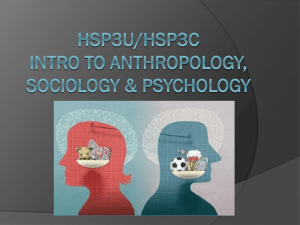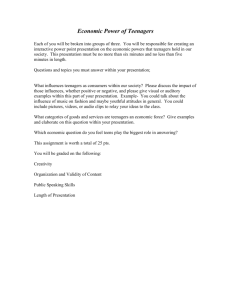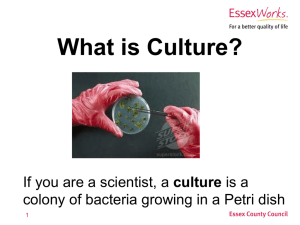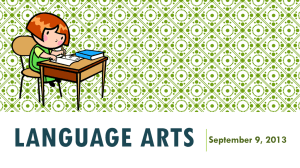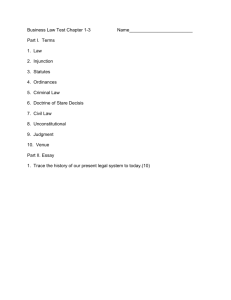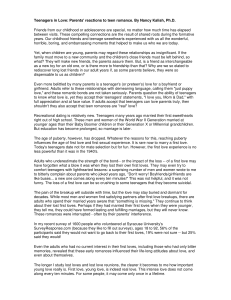The family
advertisement
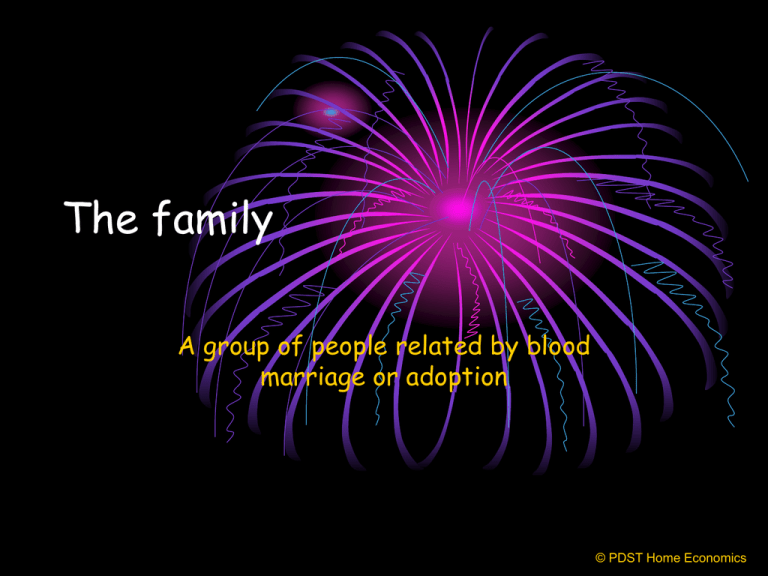
The family A group of people related by blood marriage or adoption © PDST Home Economics Types of family • Nuclear: parents and children • Lone parent: one parent and children • Extended: Parents children and others e.g. grandparents, uncles, aunts, cousins etc.. • Blended: family consisting of partners with children from previous relationships Functions of the family • To provide the physical needs of the family e.g. food, clothing, shelter, protection from danger. • To provide the emotional needs of the family e.g. love, security. • To help the development of family members e.g. socialisation, life skills. Rights & Responsibility • A right is something to which we are entitled • A responsibility is something for which we are answerable Rights of Children (under 18) • • • • Love and understanding To grow up in the care of their family Education until 16 Protection from cruelty and neglect Rights of Adults ( 0ver 18) • • • • • To work To vote Consumer rights To sign legal documents To marry Responsibilities of children • To show respect to others. • To obey parents and people in authority • To learn how to behave in their society Responsibility of Adolescents • • • • To respect themselves and others To co-operate at home To participate in school To behave properly in their society Responsible teenagers • Are good role models for younger children • Have a good relationship with siblings, parents and grandparents. • Have a good influence on peers Roles • A role is a ways were are expected to behave in life. • Every person has different roles to play at different times. • Eg daughter, sister, friend, student, girlfriend, club athlete. Parent’s Role • Reproducing/adopting/fostering and caring for children. • Providing financially for children • Providing education for children until 16 • In the past fathers earned money, mothers cared for children. • Now these roles have changed Children’s role • Behave in a way normal for their age. • Teenagers expected to be more responsible and independent. • The influence of peers is stronger which can cause tension between teenagers and their parents • Good communication between teenagers and parents can solve this problem Gender Roles • Gender means being male and female • Males and females are expected to act differently • They learn this from observing the males and females around them • Equal treatment of males and females is called gender equality Stereotyping • Means seeing things or people in a set or fixed way. • Examples: • All mechanics are men • All black people can sing • All nurses are women Social norms • An acceptable way of behaving in society. • People are expected to behave in a responsible so that conflict in society is avoided. Relationships • An interaction between people • Our first relationships are within our own family • If we have good relationships within our family we find it easier to form relationships outside the family Relationships • Ideally relationship between parents is close, loving, equal and respectful, sharing the responsibility for the family. • Relationships between parents and children should be loving, secure and respectful. It is a parents responsibility to discipline children. • Relationships between siblings should be close and caring, they should be treated equally by their parents. Communication • How we relate to one another. • Involves body language, speaking and listening • When we first meet someone we create an impression by how we look and communicate. • Don’t always your first impression, get to know people. Listening • A skill • Good communicators: Speak clearly Listen carefully Look people in the eye Conflict • Everyone has disagreements with other people from time to time. • Conflict can only be solved by communicating with the other person or people.

